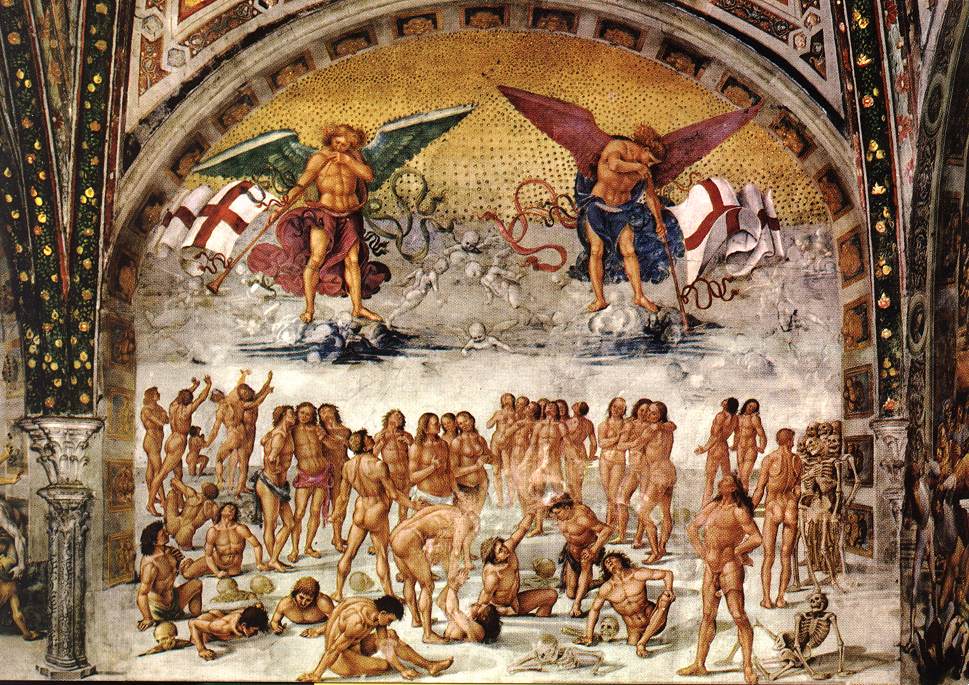Unlike his contemporaries Leonardo, Raphael and Michelangelo, Luca Signorelli never quite made it through to posterity as a household name. Signorelli: The Complete Paintings is a beautifully produced new book which, with generously large colour reproductions, an essay by Laurence B. Katner and a catalogue of beetlebrowed erudition by Tom Henry, aims to introduce this energetically strange painter’s work to a larger audience.
“With his profound mastery of design, particularly of nudes, and with his grace in invention and composition, Luca Signorelli opened the way to the perfection of art,” wrote Giorgio Vasari, pioneering chronicler of the Italian Renaissance. Seen as a whole Signorelli’s work suggests that Vasari was right about his importance – the vast, swarming compositions with which he decorated the walls of Orvieto Cathedral clearly inspired a host of later Renaissance artists – but it was perverse of him to try and make Signorelli sound so exemplary and correct. “Mastery of design” and “grace in invention” are odd phrases to have flourished in his direction, making him sound almost dull; whereas what seems most striking about Signorelli’s work now is its profound eccentricity – a kind of sublime hallucinatory quality, thoroughly infused with the apocalyptic fervour of the late fifteenth and early sixteenth centuries.
The artist was born in Cortona in southern


